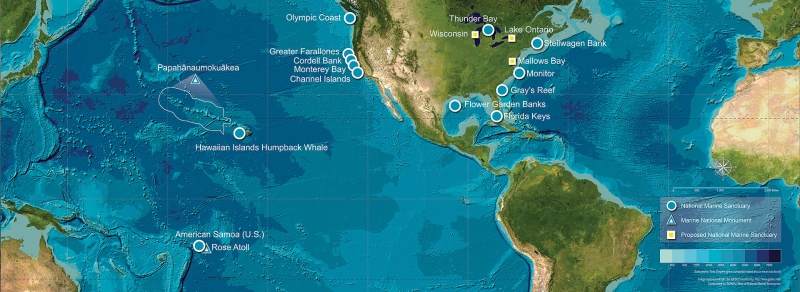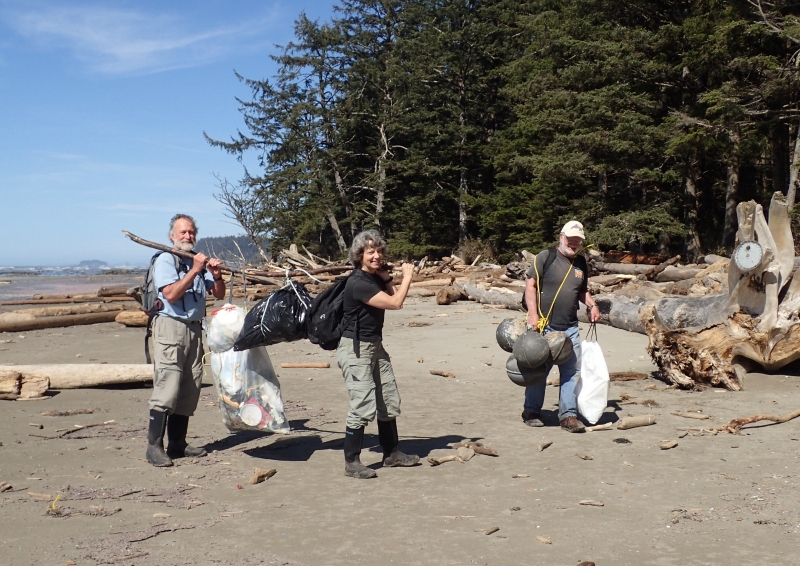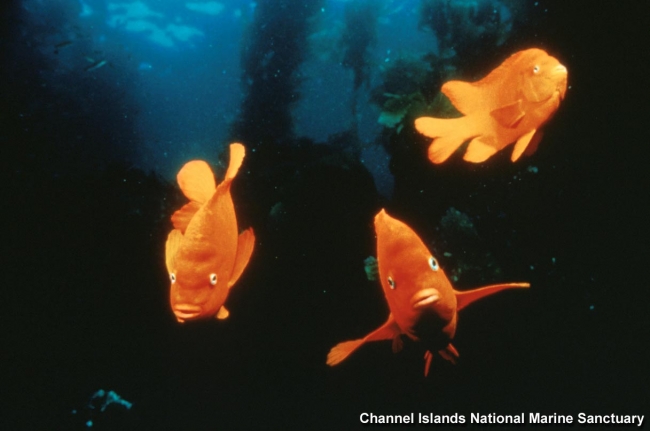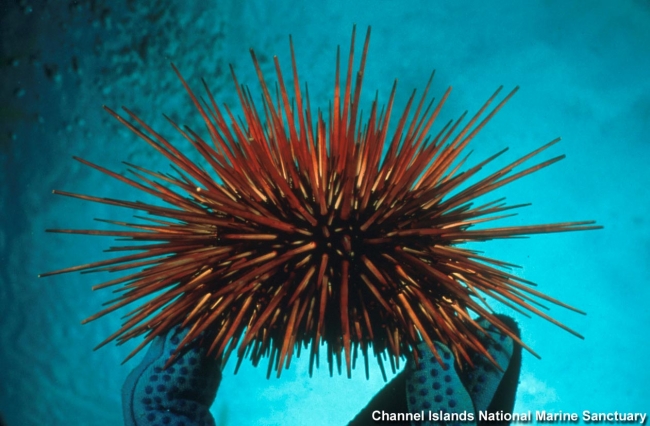One way to describe a National Marine Sanctuary (NMS) is to consider it a “National Park of the Ocean,” and much like our park system, these ocean parks are special areas that protect important marine and freshwater ecosystems around the nation. Each year, the sanctuaries celebrate Get Into Your Sanctuary, a day or days to raise awareness about the value of our national marine sanctuaries as iconic destinations for responsible recreation through a series of special activities.

Activities such as boating, fishing, and wildlife watching all can happen in sanctuaries, providing memories and impactful experiences. These activities also fuel an important sector of the economy: recreation and tourism. This sector relies heavily on healthy coastal and ocean resources as well as the aesthetic quality of the environment. Unfortunately, marine debris is a pervasive issue in many coastal areas of the United States and that is why it is important to prevent, monitor and remove debris from entering our ocean or Great Lakes, especially in protected areas like our sanctuaries! The Marine Debris Program has partnered up with sanctuary sites across the country to tackle marine debris. A few examples of our collaboration are highlighted below:
Greater Farallones and Olympic Coast National Marine Sanctuaries
Since 2012, the NOAA Marine Debris Monitoring and Assessment Project (MDMAP) has brought forth invaluable data, which continues to increase our shared knowledge of marine debris. The Greater Farallones National Marine Sanctuary (GFNMS) of California and the Olympic Coast National Marine Sanctuary (OCNMS) of Washington became MDMAP partners in 2012. Following the 2011 Japan Tsunami, the MDP joined forces with these two sanctuaries to monitor the influx of tsunami debris to the West Coast. Dedicated volunteers with the OCNMS conduct monthly surveys, sometimes surveying up to 15 sites per month! Monthly surveys take a lot of work, so trained citizen scientists and OCNMS staff team up with local community groups and schools to conduct the surveys. This offers an opportunity to provide education and outreach to the community, in addition to collecting data and cleaning up marine debris.

Channel Islands National Marine Sanctuary
With the support of a NOAA Marine Debris Program Community-based Marine Debris Removal Grant, researchers from California State University Channel Islands (CSUCI) and the Channel Islands National Park, in collaboration with the Channel Islands National Marine Sanctuary staff, volunteers, and local fisherman conducted marine debris removal and shoreline surveys on Santa Cruz Island, Santa Rosa Island within the sanctuary waters, and mainland sites near Oxnard, California. CSUCI project leads also worked with local junior high and high schools and developed informal and formal marine debris curriculum and marine debris community outreach projects at the K-12 and undergraduate levels to help develop the next generation of stewards.
National Marine Sanctuary System
The Marine Debris Program (MDP) collaborated with the Office of National Marine Sanctuaries (ONMS) on the Marine Debris Monitoring Toolkit for Educators. This Toolkit translates the MDP’s Marine Debris Monitoring and Assessment Project, a robust citizen science initiative, for classroom use. The Toolkit is designed to assist teachers in educating their students about marine debris and involving them in marine debris research and outreach. Using the Toolkit, students conduct marine debris surveys, enter data into a national database, analyze data, and become involved in marine debris stewardship within their communities.
If you missed out on this year’s Get Into Your Sanctuary event, there are many ways to become involved - whether it is volunteering or thinking about your marine debris impact and what you can do to help. Explore our How To Help page and jumpstart your efforts today to protect the ocean and its special places for generations to come.


